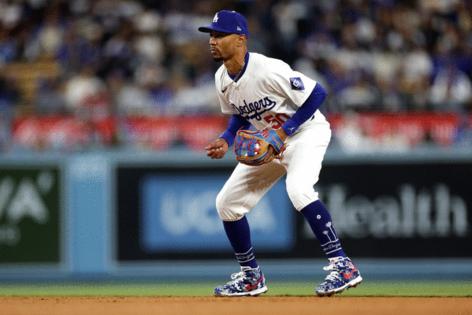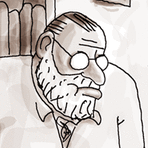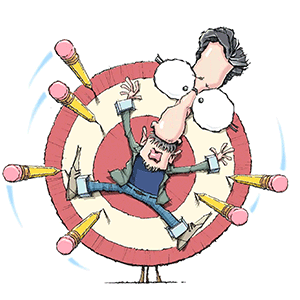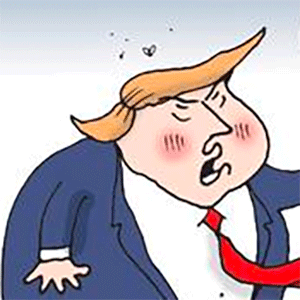'Two grades better already.' Why Mookie Betts' shortstop switch should be smoother now
Published in Baseball
PHOENIX — Troy Tulowitzki never knew Mookie Betts particularly well during their time together in Major League Baseball.
A five-time All-Star and two-time Gold Glove shortstop, Tulowitzki played against Betts plenty near the end of his 13-year career, overlapping with the start of Betts’ rise to stardom with the Boston Red Sox. The two had mutual friends and were division foes for three years while Tulowitzki was with the Toronto Blue Jays from 2015 to 2017.
But with Betts just beginning his career and Tulowitzki winding down his decorated playing days, their interactions were limited. The first time they met, Betts was almost too shy to say hello.
“He was like, ‘Oh man, I was so scared to talk to you,’” Tulowitzki said with a laugh recently, after hearing Betts recount the story years later. “Now, obviously, he’s one of the best players in the game.”
One of the best, yes. But also one in search of guidance in playing shortstop.
So as Betts embarked on a tireless training program this offseason, preparing to play the position full-time for the Dodgers after his inconsistent three-month stretch last season, he reached out to Tulowitzki and asked to spend some time training together.
Tulowitzki, now an assistant coach with the Texas Longhorns, happily obliged — excited to work with a player of Betts’ caliber and, like the rest of the baseball world, also curious to see how the six-time Gold Glove right fielder would fare in his virtually unprecedented position switch.
“To be one of the best defenders in the game, if not the best with the Platinum Gloves and Gold Gloves and all that, and then to go to shortstop,” Tulowitzki said, “I’d watch him play [last year] and was like, ‘Eh, he’s OK there.’ But that’s what he should be.”
Fast-forward a few months, however, and you can count Tulowitzki among the growing contingent of those sold on Betts’ potential at shortstop.
“I wouldn’t say this for anybody else that’s just spent however many years in the outfield and then go to the infield,” Tulowitzki said of a position change that has no equivalent in recent baseball history. “But I can truly tell you, I think he can be an elite defender at the position — which is just crazy to say.”
Last year Betts got a crash course at the position. He was pressed into shortstop duties just weeks before opening day. He spent the first half trying to learn its intricacies on the fly. And after missing two months because of a broken hand, he returned to right field for the stretch run, unable to progress enough at shortstop to play there in the playoffs.
This winter Betts benefited from a more curated instructional plan. He took grounders on an almost daily basis near his home in Los Angeles. He traveled to see Tulowitzki in Texas and Dodgers coaches in Arizona, working on everything from arm slots to attack angles to the mental process of handling different defensive situations.
Most of all he started to craft a personalized style at the position, using his natural athleticism and long-time outfield habits to play shortstop with what first base coach Chris Woodward termed a more “downhill” mentality — already showing this spring more of a comfort level and confidence than he did during his nine-error experiment there last season.
“It’s two grades better already,” manager Dave Roberts said.
The deferential Betts has been more reserved in his own analysis, emphasizing he still has much to learn.
“The one thing I have right now is my technique I practiced in the offseason,” he said. “But the process is gonna be trial and error.”
But others who have watched him expressed renewed optimism in his ability to succeed as a shortstop. The same things Tulowitzki saw in the offseason, Dodgers coaches have witnessed in the early days of camp.
“He’s kind of freed up,” said Woodward, who worked with Betts last season as a special advisor before being hired as the first-base and infield coach this offseason. “He feels like he’s got a style that works well for him. So now it just comes down to maintaining those reps and getting more game reps.”
Betts’ offseason work began almost as soon as the Dodgers’ championship parade ended.
In the first couple of weeks of winter, he and the Dodgers decided to commit to the position switch. And though Betts struggled last year — especially with his throws, which accounted for eight of his nine errors in just 65 games at shortstop — the Dodgers were betting on his perseverance, knowing he was determined to stick at the spot he hadn’t played full-time since high school.
“He is dead set on it,” president of baseball operations Andrew Friedman said at MLB’s winter meetings. “His point is, ‘if I have an offseason to train for this and to get my body in those positions and to learn this, I have no doubt that I can figure it out.’ So we’re going to give him every chance to do that. I wouldn’t bet against him.”
Because Dodger Stadium was unavailable amid large-scale renovations, Betts began frequenting local high school fields with Dodgers video coordinator Petie Montero. Starting in November, they bounced around between the diamonds at Crespi, Sierra Canyon and Loyola. Sometimes the sessions were so improvised, Betts used his backpack as a makeshift base.
“Didn’t matter,” Betts said. “As long as you get the work in.”
Each day, with Montero’s iPads filming Betts’ every move, Montero hit Betts grounders with a fungo bat for upward of two hours. They started with three sessions per week, then four, then five to six.
In a total reversal from last year, when Betts had to fast-track his fundamentals in rushed pregame workouts, the work this winter was methodical. For the first few weeks, Betts did nothing but field grounders to clean up his footwork. From there he began layering in soft throws, growing his comfort with the myriad arm angles required. Only then did he and Montero ramp their way up to full-speed drills.
“It’s not like he’s trying to learn stuff on the fly, then get ready to go play at 7 o’clock,” said Montero, who shared film of each session with the rest of the coaching staff. “I think [this offseason has] given him a little leeway to work on things. And then if we have feels or an understanding of ‘I want to try this’ or ‘Let’s try this,’ we can recreate that when nothing else is happening, when there’s no game that night.”
From his offseason home in Arizona, Woodward reviewed the film from each session, calling him on a daily basis to review his progress and offer feedback. On several occasions Woodward and Betts traveled to train together as well.
“He’s free-flowing and athletic and he likes to play a little more downhill,” Woodward said, comparing Betts’ strengths at shortstop to those of former Dodgers All-Star Corey Seager. “His throw is a lot better [than last year], and when he’s in a flow state like that and his body’s moving and synced up, he’s obviously a really special athlete.”
Throwing also was the main focus of Betts’ work in Texas with Tulowitzki. Amid his transition from the outfield, where Tulowitzki noted “you’re trying to get over the top and create some backspin,” Betts picked Tulowitzki’s brain on how he positioned himself for different tosses across the infield. Then, Betts took that feedback and put it immediately into action during his three-day visit. Over the rest of the winter he continued to send Tulowitzki video of his progress too.
“I couldn’t believe the strides that he made,” Tulowitzki said. “I say to do something, and it’s pretty much done in a day or two. And then once he went home, he would send me video back, and I’m like, ‘Yeah, that’s it, man.’ Talk about a pretty easy guy to work with. He’s special.”
It doesn’t mean Betts is primed for Gold Glove-caliber play right away. This spring he has continued to grind through daily shortstop drills, often remaining on the field long after the rest of the infielders have concluded their rounds of morning grounders. He also knows that for all the reps he got this winter, nothing will compare to the speed and pressure of real games, when his new fundamentals will be put to the test.
“It’s the first time I’ve had to mentally prepare for something like this,” Betts said. “Again, I didn’t get this opportunity [last year], so this stuff never came across my plate. So I really have no idea. I’m just gonna go out there and give it what I got, and use this spring training to talk to other guys, figure out what information I can use to make better decisions throughout the game.”
The Dodgers do have fall-back plans if Betts struggles. Tommy Edman, the primary shortstop during the postseason, is currently slated to play center field but could be summoned back to the infield. Miguel Rojas will serve as Betts’ backup but is capable of taking on a full-time role and remains the best defensive shortstop on the team. Kiké Hernández and Hyeseong Kim also could be options.
For now, the opportunity rests entirely with Betts. And so far, the early reviews have been glowing.
“He’s way more comfortable with the things he’s doing at short,” Rojas said.
“He’s starting to look more natural with how he wants to approach the ball, and his throws have been great in practice,” third baseman Max Muncy added.
“Having the entire offseason to work it is gonna be a game changer for him,” Hernández echoed.
As for Tulowitzki?
“I told him, you’re gonna lose me a lot of sleep,” he joked. “Because now I’m definitely gonna watch Dodgers games.”
____
©2025 Los Angeles Times. Visit at latimes.com. Distributed by Tribune Content Agency, LLC.







Comments